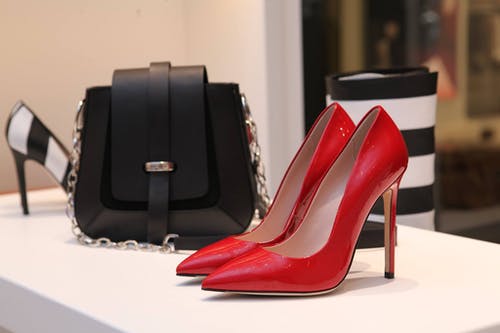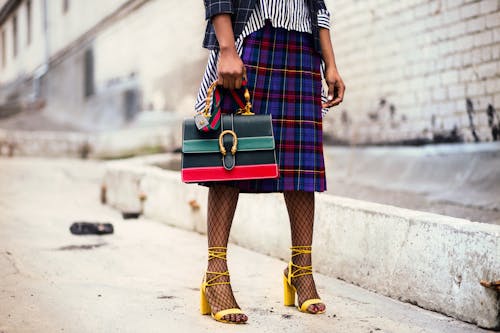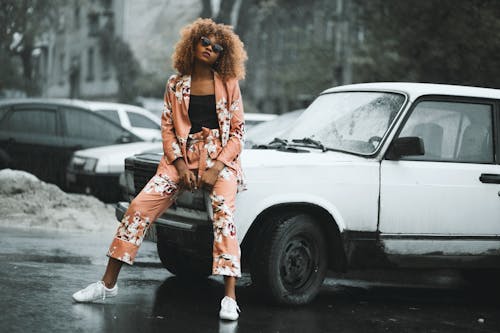
Dressing up for remote working could make you more productive
When lockdown began and working from home became the new normal, almost everyone I spoke to was delighted with how things had worked out. Of course, this was in the first two or three weeks of the pandemic hitting Europe, and we hadn’t been badly affected thus far. There was a novelty to the whole things, even though the numbers were quietly and menacingly rising in the background. But for the first time, Europe was trying out remote working and for the first while we loved it. Once all the initial hurdles, like getting used to Zoom were overcome, we took to the home office likes ducks to water. We relished our new blended lives, the hours we saved not commuting, how available we were for our families.
Flash forward to a year later, and half of us now stare zombie-like through our screens at colleagues and classmates we haven’t seen in almost a year. The home office is wherever there’s space to put the laptop. If our children interrupt a Zoom meeting one more time so you can settle a dispute, you’re going to scream.

The blending that seemed to make life easier a year ago has become yet another hardship to field in our day to day lives. Our mealtimes are punctuated with phone calls from the office, our minds are still whirling with admin while we try to sleep and our comfort clothing has become our office wear.
And herein lies the problem.
There has been so much talk of boundaries in the last while when it comes to separating home and work life, now that they’re happening in the same space. But when it comes down to it, how on earth can you actually implement those boundaries? You can sign out of your emails or turn off notifications after a certain time. You can try to keep work to one room (good luck). Or you can try focusing on your clothes.
Yes, really.
The term ‘enclothed cognition’ was first coined in 2008 by researchers focusing on the effect that clothing can have on our psychological states. What we wear and when we wear it may be more powerful and more impacting on our brains than we think. Our clothes carry connotations or are ‘symbolic’ and when that symbolism combines with the physical experience of wearing them, we can alter our mindsets significantly.

It sounds a little faffy, but there’s actually been quite a few experiments looking into this since the school of thought began in the 2000s. The first one was simplistic, looking at the actions and words that people associated with wearing a lab coat. The words ‘careful’ and ‘attentive’ came to the fore and so the researchers found that when they compared the subject’s performance on attention-to-detail related tasks, they performed better when wearing the lab coat than when not wearing one. The same experiment was conducted with a doctor’s coat, which also increased performance and a painter’s coat, which had no noticeable affect on performance.

So these early experiments show how certain associations with clothing can affect how we perform, but those are because of the job associations. The painter’s coat had no effect, on attention to detail, meaning that it is possibly not a job people associate with that particular skill.
Hutson and Rodriguez’s paper ‘Dress for Success: How Clothes Influence Our Performance What you wear can influence your thinking and negotiating skills, and even hormone levels and heart rate’ shows how the body of research is growing, detailing experiments that found clothes influencing the wearer’s psychological processes, meaning changes could be tracked in their cognitive and behavioural responses. In one case, subjects were asked to choose to wear either formal or casual clothing to take a cognitive test and it was found that formal business attire increased ability to think abstractly, increased creative thinking and long-term strategising ability. The experiment seemed to suggest that formal attire was linked with feelings of power, which is a notion that tracks across lots of other experiments done under similar conditions. Wearing informal clothing was found to actually possibly hurt one’s ability to negotiate and obtain profitable deals, compared to their counterparts, those who instead opted for formal attire. In males, the study found that those who dressed down even had lower levels of testosterone.

Which is why what we’re wearing to the home office can have a huge affect on our job performance. Now that we’ve all tried it out for the year, I think most of us can agree that the biggest problems with remote working is a) setting boundaries and b) keeping motivated and creative. When we tumble from bed, putting on our comfiest sweats and cosy hoodies, they don’t physically feel that different from our pyjamas. Nor do they symbolically represent power or creativity or that it’s time to work. The texture and the associations are comfort, relaxation and down time, none of which are conducive to a productive work day.
By wearing clothes that are more in line with the ‘home’ part of our home office, we further confuse the lines between the two spaces and more importantly, the two mental spaces. In ordinary times when you come home from the office, one of the first things you do is change clothes, or at least change shoes into something more suitable for around the house, not the office. So having no clear lines between office wear and home wear has our minds unable for either mode of living; alert, creative and strategic work life, or relaxing and recharging home life.

Our clothing choices can also control how others approach us during our workday. Now that we’re at home, our lives are full of interruptions. Children, spouses, housemates, postmen, salespeople – if you’re in your lounge wear – it can be difficult for particularly the children to distinguish between work mom and home mom. Work clothing is a visual reminder that this is a time when important things are being done and interruptions should only happen when absolutely necessary. Work clothing should make you ‘out of bounds’ for normal mom duties – within reason. The visual clue adds an importance to your task for yourself and for others around you that your priorities and attention is beyond the home right now, so it's important that others can learn to respect that.
Beyond even doing this for others and for productivity, it’s important for your mental health to feel good about yourself. When we don’t interact with people for long periods of time, our confidence, social drive and therefore self-care can deteriorate. It’s happened to all of us, and there’s no shame in it. It can often feel pointless to get dressed properly when we may not see anyone beyond our bubble that day, or we have gotten into the habit of minimum effort in favour of comfort. But not feeling good about your appearance can quickly landslide into not feeling good about yourself. One feeds the other and can have us feeling ungrounded and unmotivated to make changes.

Psychologically, it makes sense to start small when we feel we’re facing a mountain and starting with a quick change in clothes could be the small hurdle that gives you the confidence to complete the rest of the track. Wear the dress you always thought was too fancy for the office. Channel ‘The Devil Wears Prada’ and put on your favourite boots to wear to your home office. ‘Dress for the job you want’ has never been such relevant advice. Even if it feels false at times, who cares? Confidence and a mental health are more important than the limitations that you have set yourself.







